After I posted on Instagram my drawings depicting what I saw on the boat to Sifnos, a friend sent me the above famous picture by Henri Cartier-Bresson. I knew the image but didn’t know that it had been made here on this island. The thing about such powerful images is that they make you look, they instruct you in a habit of seeing, and, even before I had received the photo from my friend, I had already taken note of a stairway here that I was going to paint. (You will see that in the second set of drawings I did on the island.) Of course, most of the time, we travel with post-cards in our heads. These postcards are more general images, less specific, somewhat banal or picturesque in some general way. When we seek them out in our travels, we produce more lackluster images—and, I’d argue, also uninspired experiences. To counter that, I have been interested in producing private, no, personal postcards during my journeys. In some ways, of course, even extraordinary images like the one by Cartier-Bresson can, through repetition, become ordinary like the postcards sold in art-shops. What to do then? I think of that song sung by Marianne Faithfull in the film “Thelma and Louise”: into the fairly commonplace idea of a woman’s desire to ride through a street in Paris with the warm wind in her hair, the singer is able to inject so much wrenching pathos! The lack, the lack. The hollowness emptying out the present reality and recording injury—it’s all there in Faithfull’s haunting voice. When we try to make copies of iconic images, there is a different kind of lack. The copy lacks the zing and liveliness of the original. I’m committed to the practice of copying for the simple reason that it compels us to observe the original more closely. (When she was in her teens, Joan Didion typed out Hemingway’s stories “to learn how the sentences worked.”) As it is, in whatever we do in art, whether it is writing or painting or anything else, we are always in conversation with past practices. This dialogue with the past makes way for discoveries. For example, in my quest to find out where precisely the above photo had been made, I arrived at the Mosaika Cafe in Artemonas and there last evening I discovered that sixty years after Cartier-Bresson had taken that magical photograph, another photographer, Ari Rossner, made an image where the original subject, the girl in Cartier-Bresson’s photograph, now a grandmother, was photographed at the same spot with her grand-daughter. A photocopy of a sort. (My friend who sent me the Cartier-Bresson image also sent me a piece on Sifnos written by John Berger. It is in his book titled Photocopies.)
I am taking the liberty of sharing some of my watercolors from Sifnos that I have been posting on Instagram but first here’s my debut video on Substack—the singing of the cicadas among the gnarled trees.
Travel reveals the familiar in a new light and so when the man at the car rental pointed to a sign and said “Mahatma Gandhi,” I took a photograph of what he was gesturing at even though I didn’t know what the writing meant. My thanks to my Vassar colleague Maria Hantzopoulos for the translation below:
The Seven You Should Not Have:
Wealth without work 2. Politics without principle 3. Enjoyment without conscience 4. Knowledge without character 5. Business without morality 6. Science without humanity 7. Worship without sacrifice.
— Mahatma Gandhi

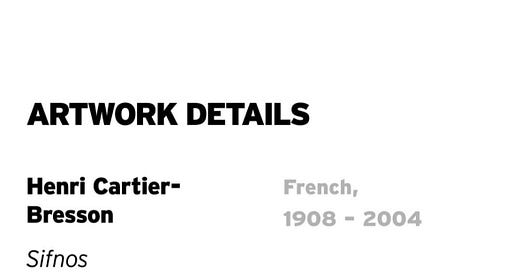



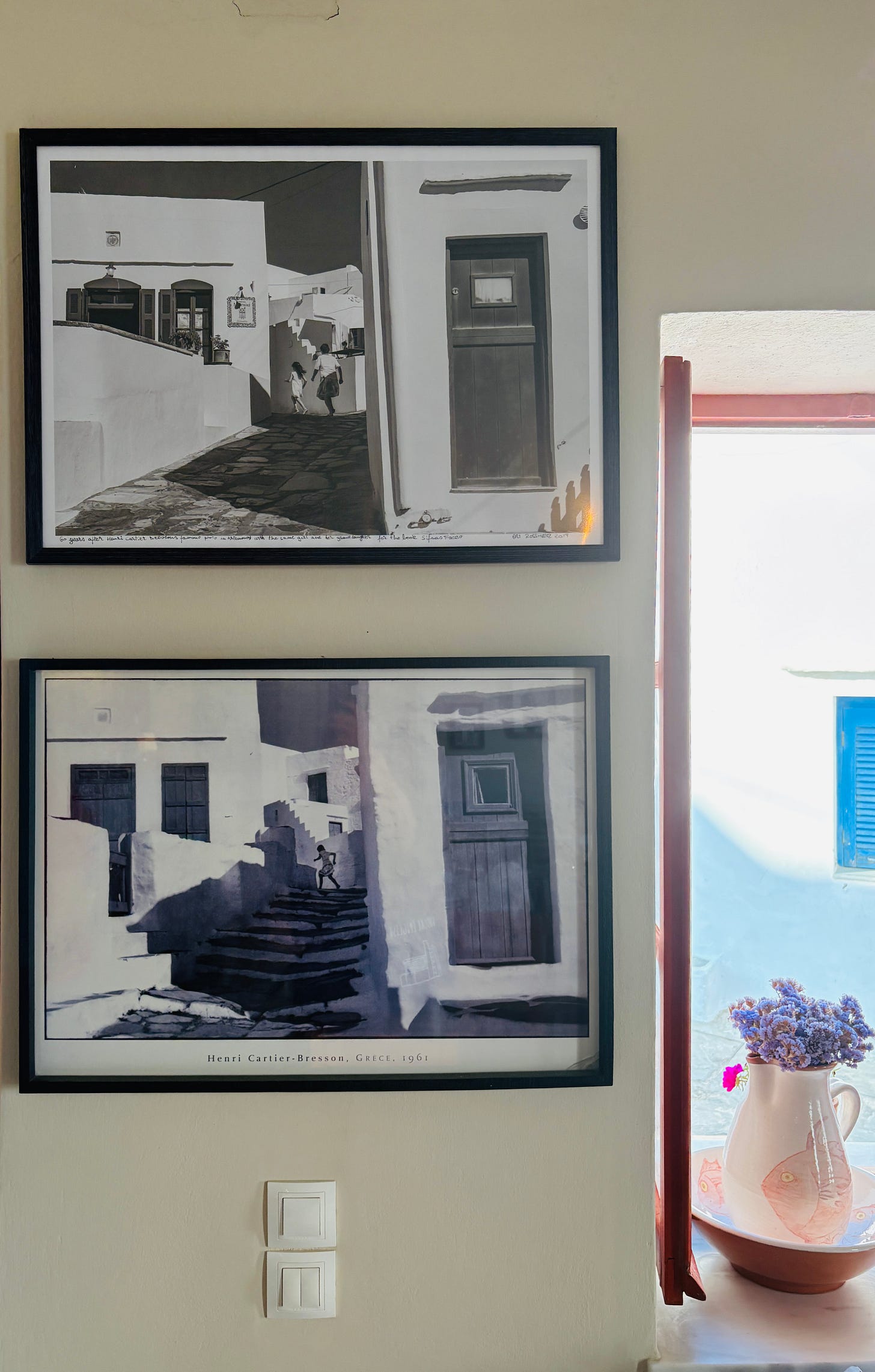
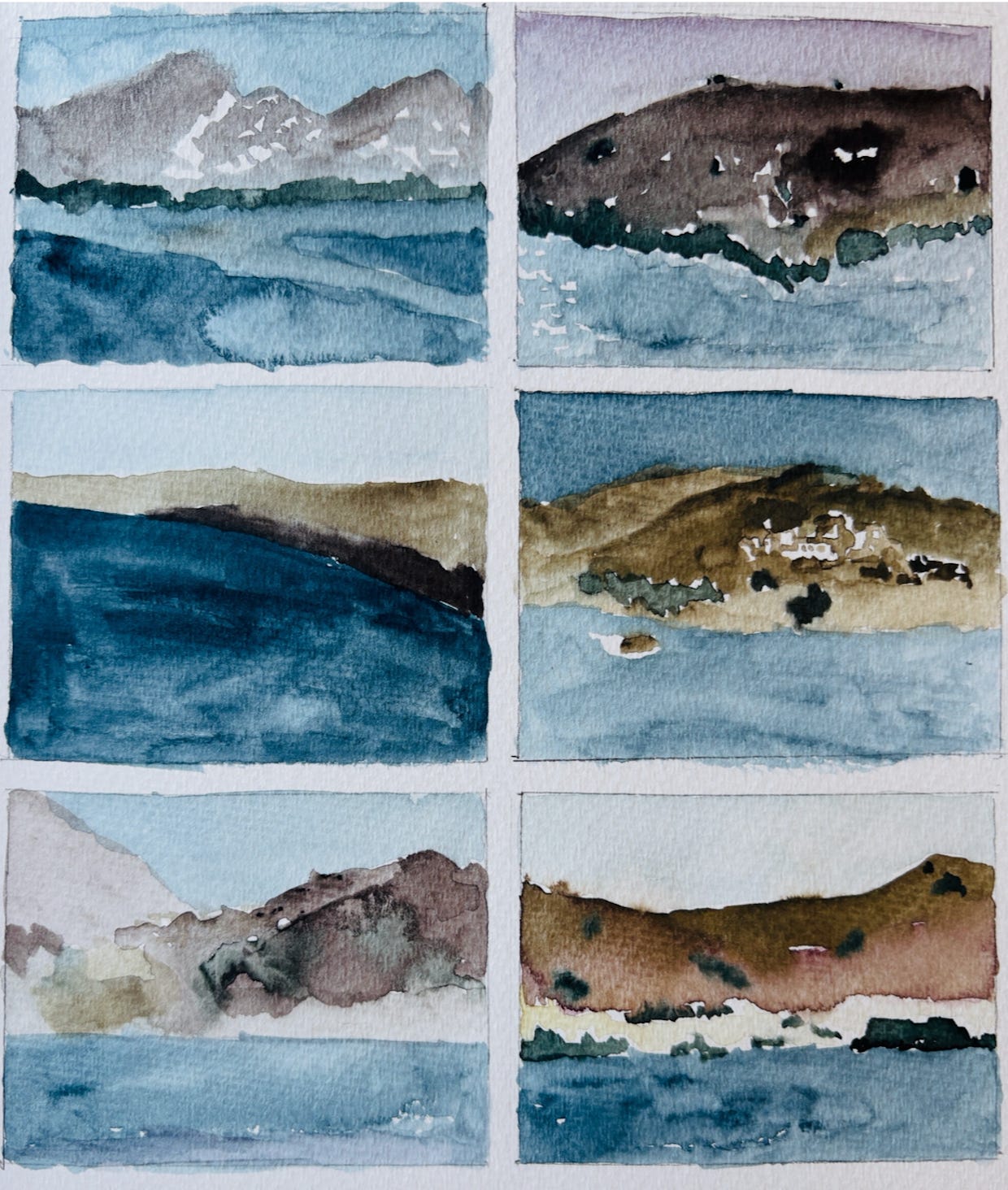

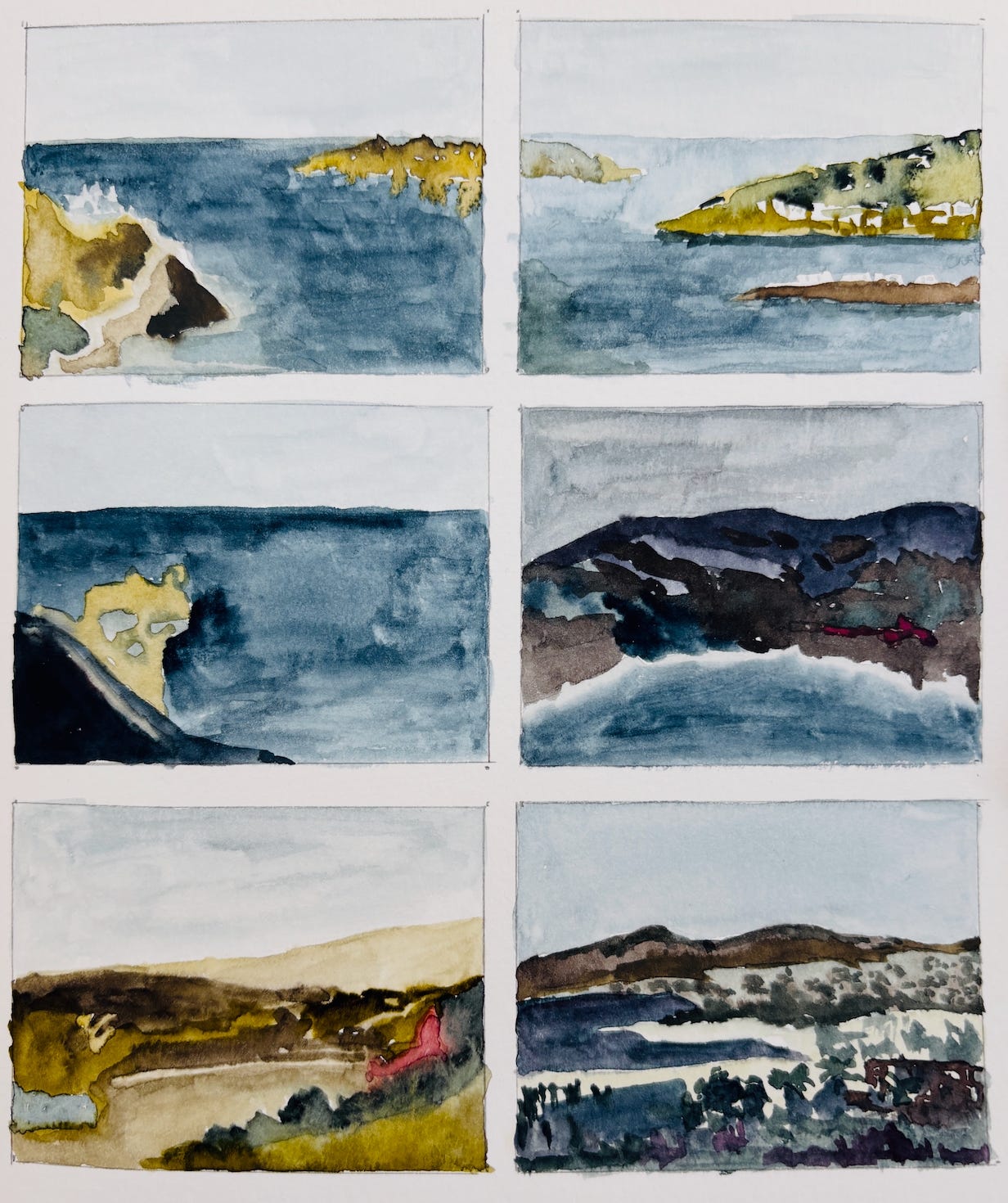

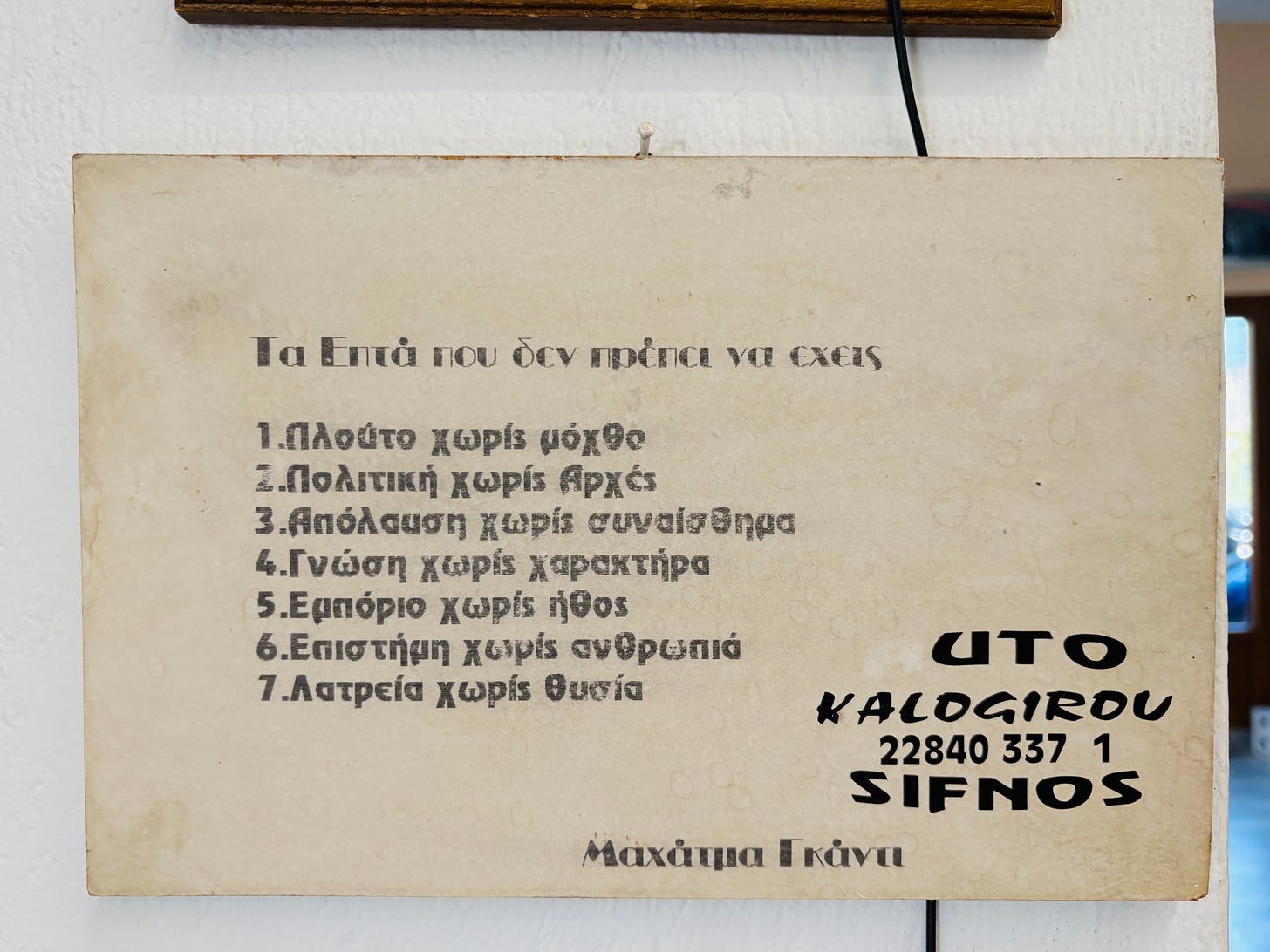
How gorgeous—all of them
Yes that’s one of hcb’s iconic images. I never knew where he had photographed it though